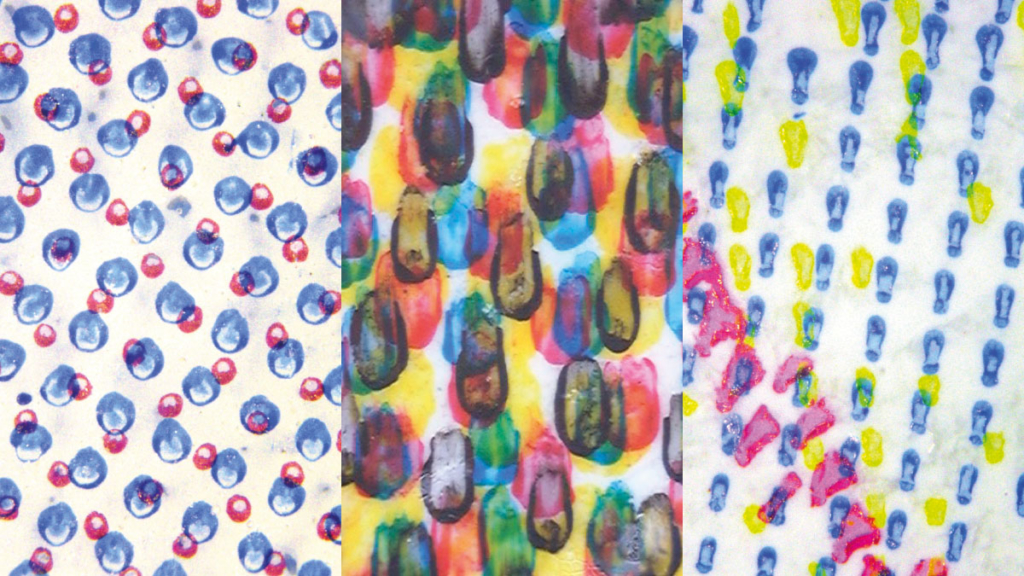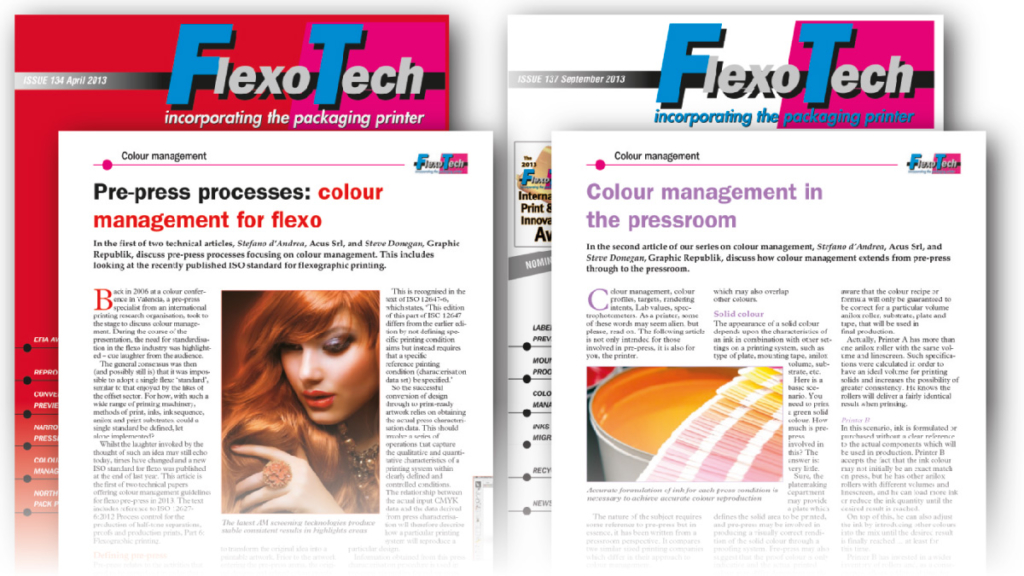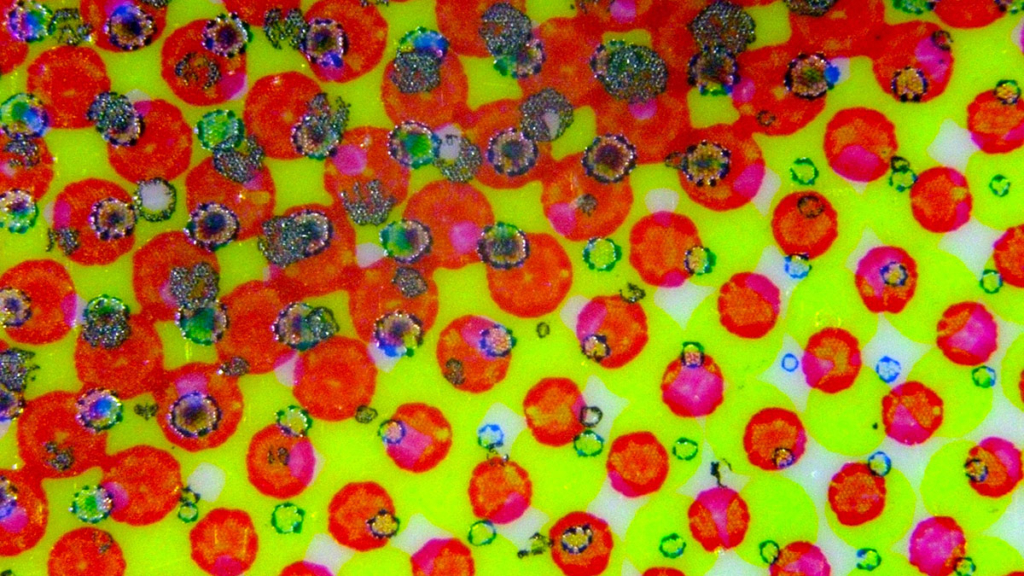Slur is characterised by the smearing of the printed image: the dots are distorted in printing direction, typically elongated, and exhibit an oval shape. This condition is caused by slippage at the point of contact and impression between the plate and the substrate and/or even the plate and the anilox roll.
The printed image appears like stretched, typically showing a halo of ink around the edges of the graphic elements, and often a void, or a lighter area, in the middle.
Slur has therefore 2 major aspects:
- deformation of the printed image;
- build-up of unwanted quantity of ink on the shoulder of the plate immediately below the printing surface.
Slur typically happens along the print direction, however, in corrugated printing, where substrate is made of single sheets, it may also appear in other directions.
There is an incorrect rolling among anilox, plate and substrate.
At the point of impression, where the plate package is compressed in the printing nip, the surface of the plate must run at the same speed as the surface of the substrate and the surface of the anilox.
When these speeds are not synchronous, the surface of the plate, and the ink, will slur over the substrate and the anilox.
Depending on the position of the surface of the plate with respect to the actual circumference of the printing repeat, the plate might run faster or slower, causing two different troubles.
The plate will run faster than the other surface for one or more of the following reasons:
- plate too thick or too hard;
- mounting tape too thick or too hard;
- sleeve mounting diameter too wide.
The plate will run slower than the other surface for one or more of the following reasons:
- sleeve mounting diameter too narrow that does not consider the print compression;
- plate too soft or thin;
- mounting tape too soft or thin.
Check and correct if necessary overall thicknesses and diameters of components:
- check sleeve external diameter;
- check the thickness of plate and tape to be within the tolerances;
- check the substrate caliper.
Correct both impressions: anilox to plate and plate to print.
Use slur marks in printing tests to evaluate and measure slurring.
Consider to run a thorough check-up and optimisation test.


